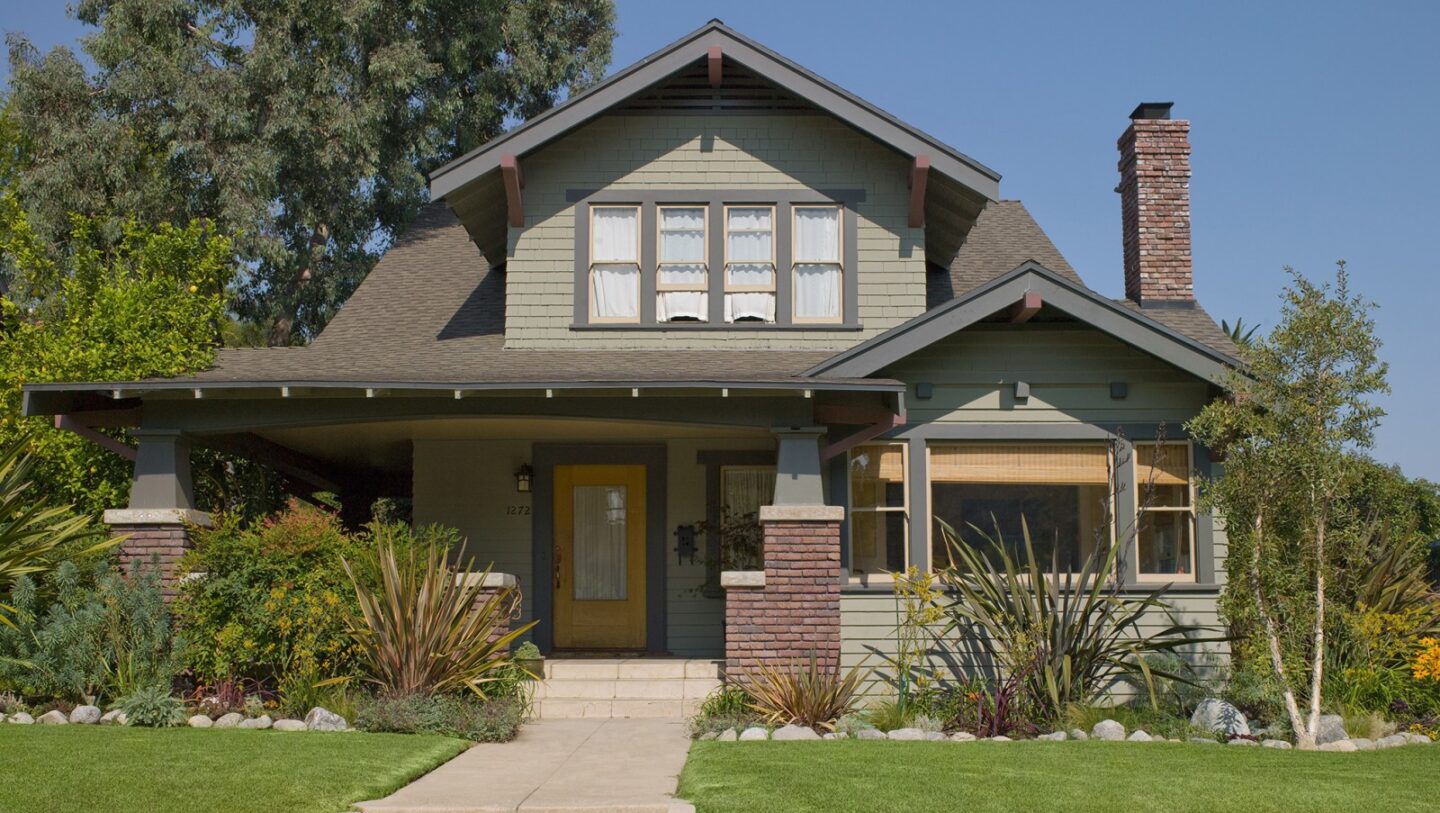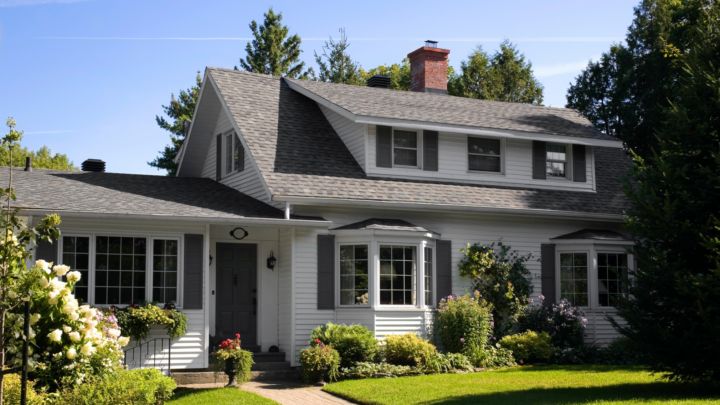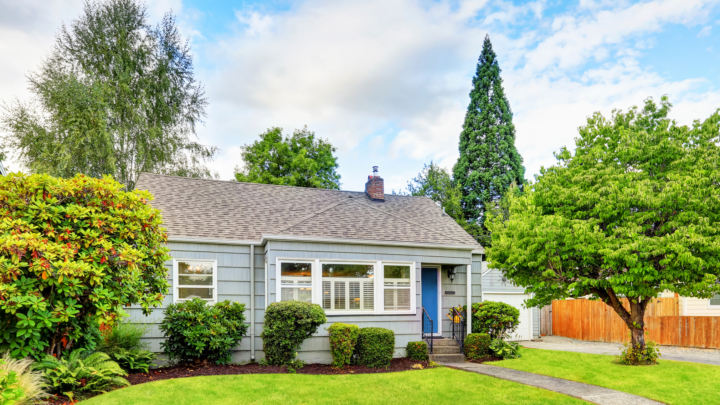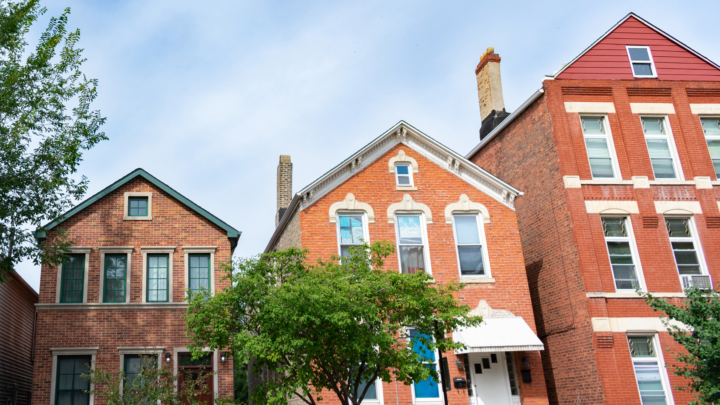Private mortgage insurance, or PMI, is a policy that protects the lender against any losses if the borrower stops making payments or fails to repay their conventional loan. Borrowers who purchase a home with less than a 20% down payment are typically required to pay for mortgage insurance. Since more than half of all homebuyers (58%) put less than 20% down on a house, PMI is likely a common expense for homebuyers. Here’s what you need to know about private mortgage insurance.
How does PMI work?
PMI is insurance for the mortgage lender, not the borrower. If you’re required to pay PMI, you’ll typically pay a monthly premium of $30 to $70 a month for every $100,000 borrowed. The cost automatically gets added to each mortgage payment until you hold more of a financial stake in the home by reaching a loan-to-value (LTV) ratio of 80%.
You can determine how long you’ll pay PMI by monitoring how much equity you have in your home. An 80% LTV ratio means your home equity is 20%. Your loan servicer can also provide you with this information. The PMI cost will be listed on all loan estimates and quotes from the lender, as well as your finalized loan closing disclosure and every mortgage statement you receive from your loan servicer.
Is a mortgage insurance premium (MIP) the same as PMI?
Conventional loans all require PMI when financing more than 80% of a purchase. If you’re using a FHA loan, lenders require a different type of mortgage insurance known as a mortgage insurance premium (MIP). While both types of mortgage insurance allow you to purchase a home with less money upfront by insuring the lender’s interests, PMI and MIP are not the same. The main difference is that MIP is managed internally by the government and lasts for the life of the loan — meaning it won’t roll off when you reach a certain LTV ratio like it does when you have PMI.
What does PMI cover?
Private mortgage insurance minimizes the risk to the lender by covering a borrower’s missed mortgage payments. When using a conventional loan to purchase a home with less than a 20% down payment, the borrower presents a greater financial risk for the lender because borrowers with less equity are more likely to have issues paying off their mortgage. Having less equity may also reduce a borrower’s options to refinance or restructure their loan should problems arise. PMI protects the lender’s investment in your home, but does not protect you as the borrower should you default on your loan and foreclose.
Do I need mortgage protection insurance (MPI)?
Mortgage protection insurance (MPI), also known as mortgage life insurance, is optional insurance a borrower can purchase (unless you have a FHA loan). While PMI protects the lender’s interest against you defaulting on your loan, mortgage protection insurance will cover your mortgage payments if you lose your job or become disabled. Mortgage protection insurance will also pay off your remaining mortgage for you in the event that you pass away before paying back all of your mortgage debt.
How much does PMI cost?
Private mortgage insurance costs between $30 to $70 per month for every $100,000 borrowed. The cost of PMI varies based on insurance rates and the borrower’s credit score, but is usually between 0.0022% to 0.025% of the principal loan amount.
Here’s what monthly mortgage payments on a $300,000 home purchase look like with and without PMI, assuming PMI is $50 per $100,000 borrowed and you use a 30-year fixed-rate, conventional loan:
| Mortgage with PMI | Mortgage without PMI | |
|---|---|---|
| Down payment | $15,000 (5% down) | $60,000 (20% down) |
| Loan amount | $285,000 | $240,000 |
| Interest rate | 5.0% | 5.0% |
| Monthly mortgage payment (principal & interest) | $1,530 | $1,289 |
| Monthly PMI (based on $50 per $100,000 borrowed) | $125 | $0 |
| Total monthly costs (excluding taxes & insurance) | $1,655 | $1,289 |
Factors that impact PMI costs
Your down payment amount, size of the loan and credit score can all impact your PMI costs. The larger your down payment and the higher your credit score, the less of a financial risk you are to the lender, which means your PMI may cost less. Keep in mind that you may pay more in PMI costs on an adjustable-rate mortgage than a fixed-rate loan, as there is more risk involved with a fluctuating rate. Generally, larger mortgages also require a higher PMI. You can use Zillow’s Mortgage Calculator to estimate your mortgage costs with and without PMI.
When do you have to pay PMI?
You’ll pay a single, upfront premium at closing, followed by monthly premiums that are usually lumped in with your mortgage principal, interest, taxes and homeowners insurance payments (PITI). You may have the option to pay yearly, but yearly payments are usually non-refundable (even if you sell the home), so you could end up paying more than you need to.
Some PMI policies may allow you to pay the entire PMI coverage in cash at closing or finance the amount into your loan principal. If you’re interested, ask your loan officer about options for upfront mortgage insurance.
How long do you pay PMI?
You are typically required to pay private mortgage insurance premiums for as long as it takes you to reach 20% equity or an 80% LTV ratio based on the original purchase price and loan amount. For example, if you purchase a home valued at $300,000 and use a mortgage to finance $285,000 of that purchase, you’ll hold 5% equity in the home and have an LTV ratio of 95%.
When does PMI go away?
PMI can be removed when you reach 20% equity in your home. Some lenders may not automatically remove PMI until you’ve reached 22% equity, but you can typically request a cancellation once you’ve reached 20%. Your mortgage agreement will specify when PMI goes away and whether or not you need to request a cancellation.
If you believe you’ve reached 20% equity based on a market increase, you can explore options to refinance to potentially eliminate PMI from your mortgage sooner. An appraisal is often required first to assess your home’s new, current market value. Use Zillow’s home value estimator to see how much your home is currently worth.
How to avoid paying PMI
The simplest way to avoid PMI on a conventional loan is to make a down payment of at least 20%. There are also a handful of credit unions that may waive the PMI requirement for borrowers with exceptional credit scores. If these aren’t options for you, check out these other alternatives to avoid or reduce PMI costs:
Affordable Loan Solution mortgage: In 2016, Bank of America launched a partnership with Self-Help Ventures Fund and Freddie Mac for a new mortgage product called the Affordable Loan Solution mortgage. It’s a conforming loan for low- and moderate-income home buyers that allows a down payment of 3% and offers reduced-cost mortgage insurance.
VA Loans: Qualified veterans can apply for a VA loan that allows up to 100% financing (that’s a $0 down payment) and does not require mortgage insurance. VA loans only require you to pay a one-time funding fee upfront at closing, but certain veterans may be exempt from the fee.
USDA loans: Home buyers with low to moderate incomes living in rural areas may qualify for a USDA loan. In addition to not requiring a down payment, USDA loans don’t require mortgage insurance.
Physician loans: As the name suggests, physician loans are available to doctors, dentists and veterinarians. This loan type was created to address the fact that many young doctors have high amounts of student loan debt and limited job history, yet long-term earning potential. Physician loans don’t require PMI, even with down payments of less than 20%, but are not commonly available through most lenders.
Piggybacking: Another option to avoid paying PMI is taking out a smaller loan to cover the 20% down payment, so that you can avoid paying private mortgage insurance. This is referred to as “piggybacking.” The downside here is that the smaller loan will typically have a higher interest rate than the mortgage loan itself, which is why piggyback loans are usually only available to high-income borrowers purchasing more expensive properties. You will also need to consider whether you can afford to pay a second loan for a set number of years in addition to your mortgage payment. Contact your tax adviser or financial planner to learn more.
How to remove PMI from a mortgage
You can remove PMI from your mortgage by owning at least 20% of the home. You can increase your financial interest in the home one of two ways: Pay down your loan balance until you reach 20% equity or increase the value of the property until the difference between your loan balance and the property value is 20% and then refinance to a new loan.
Pay down your principal balance
Every time you make your monthly principal payment, you gain a little more equity in your home. Once you reach 20% equity, you can request your lender remove your PMI — saving you money every month. Most lenders won’t automatically remove your PMI until you reach 22% equity, so you may have to keep track of your equity gains and ask for PMI to be removed when you reach 20% LTV. For example, if you bought a home for $300,000 and have a loan balance of $240,000 or less, you can ask for your PMI to be removed. Note that the 20% threshold usually applies to primary residences only. For investment properties, you’ll need to reach 30% (Fannie Mae loans) or 35% (Freddie Mac loans) to have your PMI removed.
Gain enough equity through market increases or home improvements
Along with gaining equity through your monthly payments, you can realize equity gains if property values go up in your area or if you make home improvements that increase your home’s value. Keep an eye on home values and consider refinancing your loan into a new mortgage when you believe you’ve gained enough equity to put you over the 20% threshold. Even if rates are higher, you may still save more each month by eliminating PMI. Most lenders can also structure a refinance loan with shorter loan terms, allowing you to avoid starting over with a new 30-year mortgage. Note that your lender may require an appraisal to confirm your home’s revised value.
Learn more about how to start the loan pre-approval process.
Written by
Kristijonas Umbrasas
01.13.2023
How much home can you afford?
At Zillow Home Loans, we can pre-qualify you in as little as 3 minutes, with no impact to your credit score.
Zillow Home Loans, NMLS # 10287. Equal Housing Lender
Get pre-qualified



